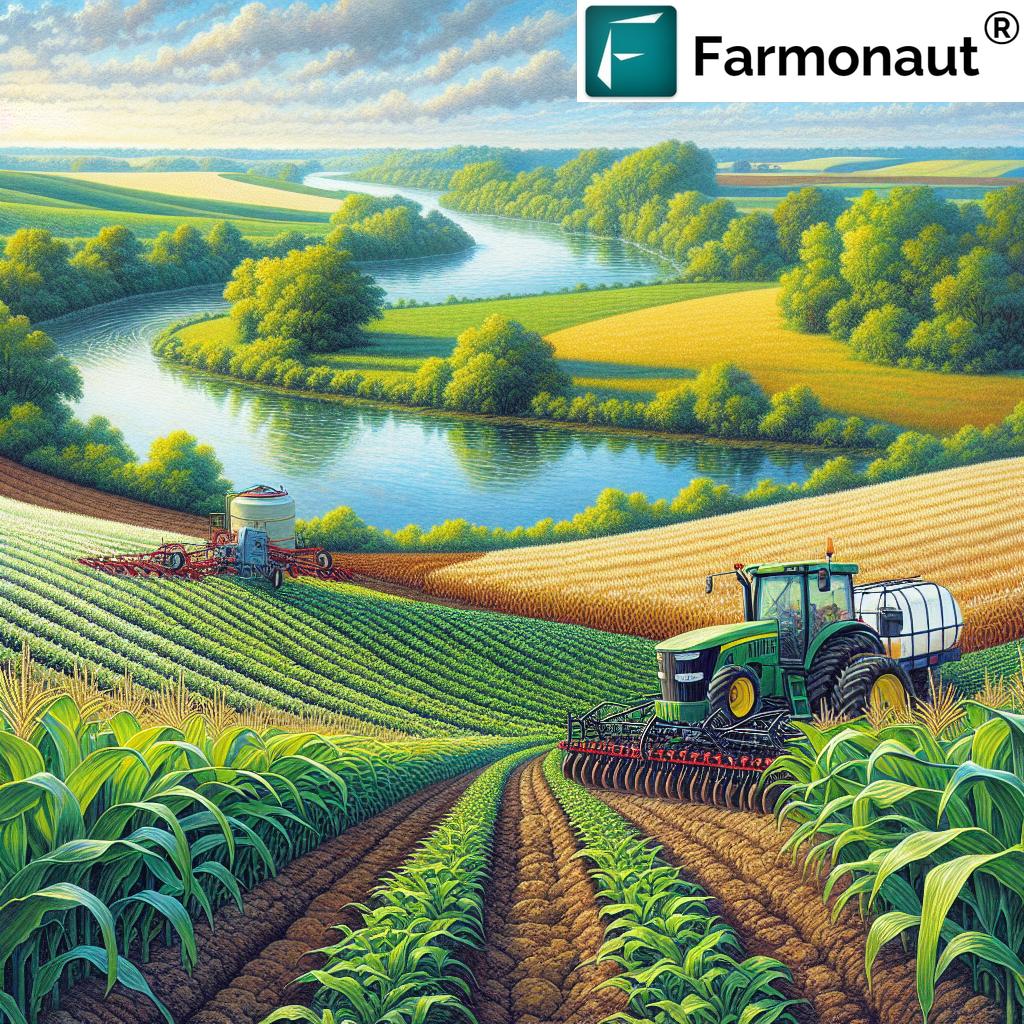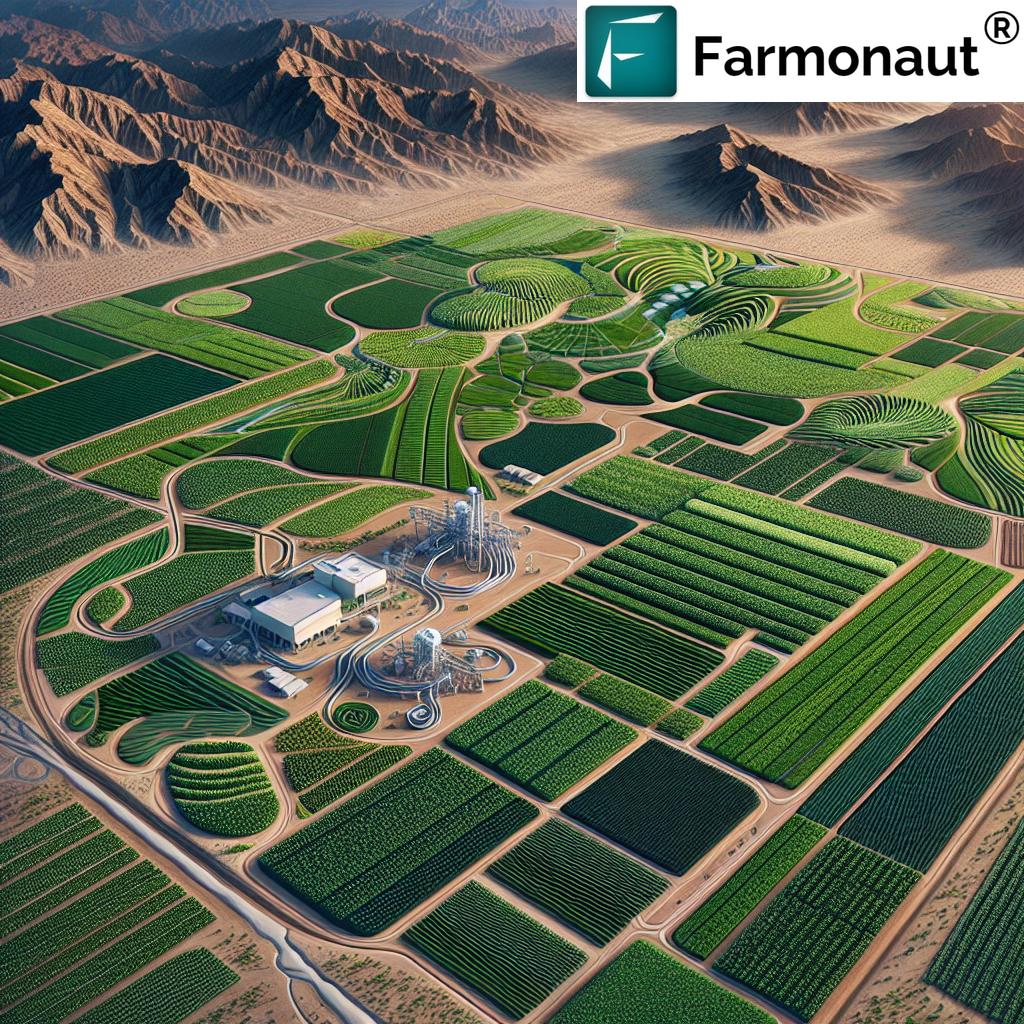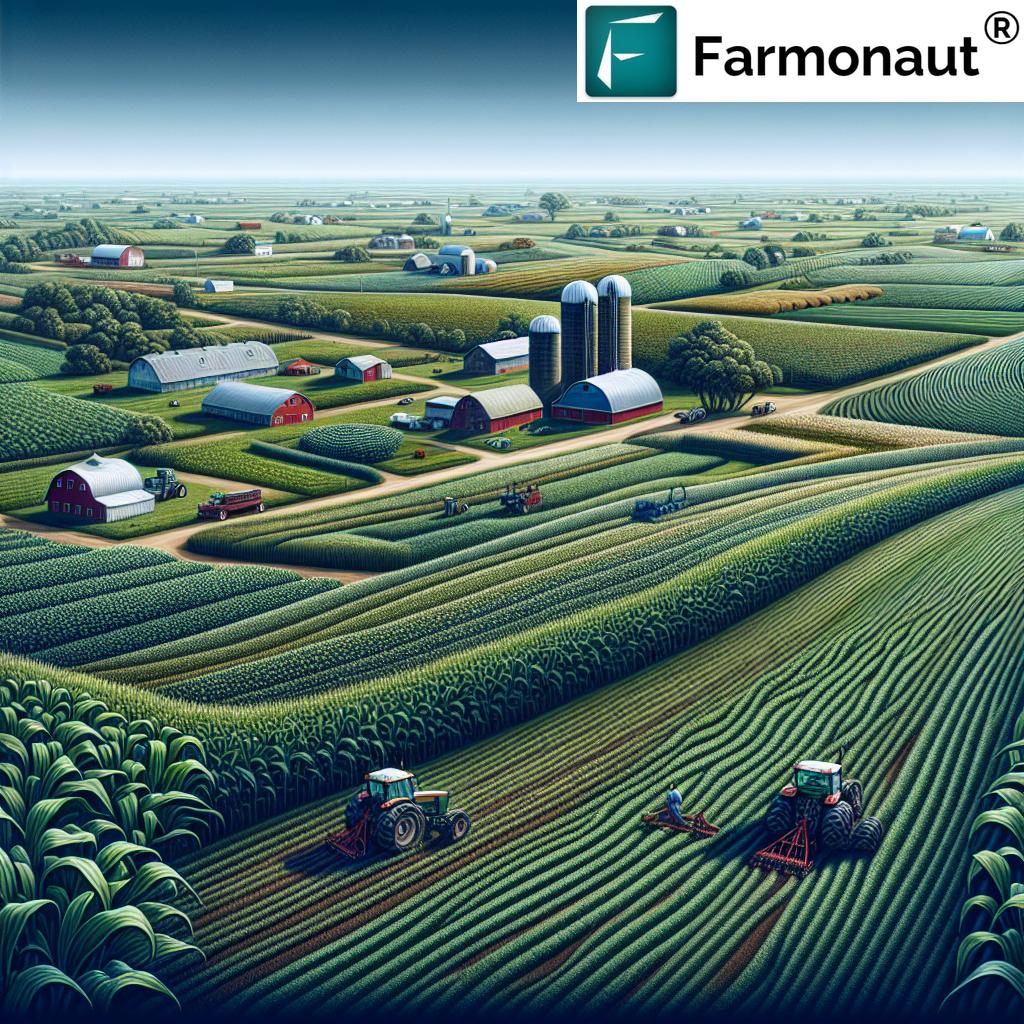Table of Contents
- Introduction: The Modern Landscape of Pest Control in Agriculture and Forestry
- Pest Control Trivia
- Evolution of Pest Control: From Extermination to Ecosystem Health
- Focus on Arizona: Phoenix Pest Control & Regional Challenges
- Terminix Pest Control Prices & Pricing Trends in 2025
- Comparative Table: Technology, Pricing, and Sustainability
- Advanced & Innovative Pest Control Technologies in Agriculture
- Integrated Pest Management (IPM): The Sustainable Future
- Vermin Control: Protecting Crops, Livestock, and Infrastructure
- Pest Control in Forestry: Safeguarding Timber and Ecosystems
- Farmonaut: Satellite Technology Empowering Modern Agriculture
- Practical Pest Control Strategies: Video Guides
- 2026 & Beyond: The Road Ahead for Pest Control
- FAQ: Terminix Pest Control Prices & Phoenix Pest Control
- Conclusion: Strategic Pest Control as an Investment in Productivity
Terminix Pest Control Prices & Phoenix Pest Control Guide
In the ever-evolving landscape of agriculture and forestry, pest control has become more than a necessity—it’s an imperative cornerstone for maintaining crop health, ensuring soil quality, and securing sustainable yields. As we progress into 2025 and beyond, challenges at the intersection of climate change, increased pest resistance, and sustainability demand advanced approaches. Key industry leaders—including terminix pest control, phoenix pest control, united pest control, and complete pest control—are raising the bar for innovative, effective, and eco-conscious solutions.
This comprehensive guide explores the latest trends in terminix pest control prices, advanced technologies, and strategic integrations for modern agriculture, crop and forest management. Whether you are a farmer in arid Arizona, a land manager in urban-rural fringes around Phoenix, or a stakeholder in forestry, this resource will help you navigate the next generation of sustainable pest management.
“Phoenix pest control prices are projected to rise by 12% in 2025 due to innovative technologies.”
The Evolution of Pest Control: From Simple Extermination to Ecosystem Health
Pest populations have long threatened the security and productivity of agriculture and forestry sectors. Traditionally, control relied heavily on chemical interventions, focusing on the swift extermination of visible infestations. Despite their efficacy, these methods posed significant risks—from resistant species emerging to harmful impacts on human health and the surrounding environment.
Today’s control landscape transcends simple extermination, shifting towards a more holistic integration of biological, cultural, physical, and digital tools that manage pest populations at economically and environmentally viable levels. Companies like terminix pest control are recognized among industry leaders, deploying advanced technologies and tailored plans that address specific pest pressures in diverse environments.
Key Drivers of Change in 2025:
- Climate change intensifying pest pressures and unpredictability
- Growing consumer and regulatory demand for sustainable, minimally invasive pest control
- Technological advancements: digital monitoring, precision application, and data-driven management
- Increasing prevalence of resistant species due to overuse of certain pesticides
- Integration of satellite-based tools and AI for proactive, targeted interventions
Focus on Arizona: Phoenix Pest Control & Regional Agricultural Challenges
When it comes to vermin and insect management, Phoenix pest control stands out for its adaptability to the unique arid climate of Arizona. Regions like Phoenix face particular pest challenges:
- Limited water supplies make irrigation systems targets for vermin like rats and rodents
- Stored grains suffer increased vulnerability during long, hot seasons
- Urban sprawl creates new intersections of residential and agricultural lands—the so-called urban-rural fringes
- Common pests include termites, scorpions, ants, cockroaches, and spiders—all requiring regionally tailored control approaches
Phoenix pest control companies specialize in these targeted interventions, leveraging innovative monitoring, drone surveillance, and digital tracking to ensure timely, effective, and comprehensive solutions for clients.
Terminix Pest Control Prices & Pricing Trends in 2025
Pricing for pest management services is undergoing nuanced changes in 2025. As terminix pest control and phoenix pest control providers increasingly adopt cutting-edge technologies—including digital tracking systems, biological agents, and drone surveillance—clients can expect a transparent pricing structure that reflects both quality and sustainable practices.
What’s Impacting Prices in Phoenix and Beyond?
- Rising costs of eco-friendly pesticides and biological controls
- Investment in new infrastructure such as sensor networks, AI-powered apps, and aerial drones
- Growing demand for bundled, subscription-based services among large farms and land managers
- Tiered pricing models by leaders like united pest control and complete pest control, designed for both smallholder farms and expansive agribusiness
- Minor upfront cost increases offset by long-term savings through loss reduction and fewer chemical applications
In Phoenix, for example, the integration of new monitoring technologies is projected to increase terminix pest control prices by approximately 12% in 2025, reflecting the shift from reactive interventions to proactive, data-driven control.
Comparative Table: Technology, Pricing, and Sustainability in Phoenix Pest Control
Explore this comprehensive overview of pest control for common Phoenix-area concerns, with projections for 2025 based on market analysis and innovative approaches in use by terminix pest control and competitors. Prices and effectiveness are estimated for a typical 2500 sq ft residence/farm lot and may vary for larger or smaller properties.
| Pest Type | Estimated 2025 Terminix Pricing (per visit/service) |
Traditional Control Methods | Innovative Tech-Based Solutions | Estimated Effectiveness (%) | Sustainability Impact |
|---|---|---|---|---|---|
| Termites | $350–$600 | Soil/wood chemical barriers; Bait stations | Sensor detection, Drone thermal inspections, Precision baits | 92–96% | High |
| Scorpions | $220–$375 | Perimeter pesticides, Manual removal | UV Tracking, AI-based mapping, Physical exclusion systems | 88–93% | Medium |
| Ants | $180–$320 | Sprays, Bait traps | Remote sensor baits, Drone dispersal, Targeted gel treatments | 85–92% | High |
| Rats & Mice | $200–$350 | Mechanical traps, Rodenticides | Digital tracking, Smart traps, Rodent-proofing infrastructure | 89–95% | High |
| Cockroaches | $160–$320 | Sprays, Gel baits | AI behavior analysis, Targeted smart baits | 80–88% | Medium |
| Spiders | $150–$290 | Web removal, Perimeter sprays | Remote sensor alerts, Precision application | 78–84% | Medium |
| Locusts (Agricultural) | $400–$700 (per outbreak) | Pesticide sprays, Manual barriers | Drone mapping & dispersal, Early warning systems | 93–98% | High |
“Over 65% of sustainable agriculture solutions in 2025 will integrate advanced pest management strategies for crop and forest health.”
Advanced & Innovative Pest Control Technologies in Agriculture
The demand for advanced pest control has never been greater. Terminix pest control and United pest control are at the forefront of technology adoption, integrating solutions like drone surveillance, digital tracking, and biological control agents into their service offerings. This technology push aligns with a broader industry trend: the convergence of traditional farming wisdom with data science, automation, and environmentally responsible strategies.
Examples of 2025+ Innovations
- Drone Surveillance & Precision Application: Remotely piloted drones scan fields and forests for early pest detection, mapping hot spots for precision intervention with minimal chemical use. This drastically reduces environmental impact and crop losses.
- AI-Driven Decision Tools: AI integrates weather, soil health, pest emergence, and even satellite data to optimize when and how to intervene. This forms the backbone of many IPM plans.
- Biological Control Agents: Using natural predators, parasitoids, and pheromones, terminix and complete pest control now suppress pests without resorting to synthetic chemicals.
- Digital Pest Monitoring Systems: IoT and cloud-based platforms provide real-time feedback to farmers and property managers, with automated alerts.
Integrated Pest Management (IPM): The Sustainable Future
Integrated Pest Management—IPM strategies—are widely recognized as the best practice for agriculture and forestry. These approaches combine cultural, physical, biological, and chemical tools to keep pest populations below economic thresholds with minimal impacts to soil quality, biodiversity, and human health. Terminix pest control and phoenix pest control have adapted their offerings to provide bespoke IPM plans tailored to local crop profiles, pest threats, and client goals.
Key Features of IPM in 2025 and Beyond:
- Proactive Monitoring: Continuous, satellite-based or sensor-based evaluations help manage pests before they become damaging.
- Cultural Practices: Crop rotation, cover cropping, and controlled irrigation make the environment less conducive to pest outbreaks.
- Biological Interventions: Releasing beneficial organisms or deploying pheromone traps for precise control of targeted species.
- Smart Chemical Selection: Highly selective products, delivered exactly where needed—thanks to precision technology.
Tip: For farmers and land managers seeking an integrated view of crop health, pest populations, and resource management, Farmonaut’s large-scale farm management tools provide multi-layered monitoring and actionable insights delivered via mobile or web browser.
Vermin Control: Protecting Crops, Livestock, and Infrastructure
Vermin control is critical across both agricultural and residential intersections—especially in and around Phoenix. Species like rats, mice, and locusts not only consume and destroy crops, but their tunneling and gnawing damage essential irrigation, storage, and other infrastructure.
Key Innovations in Vermin Control (2025+):
- Digital rodent tracking: Sensor-equipped smart traps deployed by united pest control and others send real-time alerts to cloud platforms, streamlining intervention across large properties.
- Drone monitoring for locust outbreaks: Aerial mapping using high-res cameras allows early warnings, with data supporting rapid, targeted responses.
- Biological solutions: Encouraging natural predators and developing eco-safe baits further reduce the reliance on harmful chemicals.
- Smart exclusion: Data-driven infrastructure modifications block vermin entry while maintaining air and water flow.
United pest control and complete pest control practitioners offer packages that combine these smart technologies for holistic protection at scale—and at a price point increasingly accessible for mid-sized family farms and ranches.
Curious how farms and fields get real-time, map-based pest alerts and **prevent costly crop losses**? Explore our AI-driven
traceability and pest risk tracking solutions, designed to empower smarter management of your agricultural assets.
Pest Control in Forestry: Safeguarding Timber and Ecosystems
Forests are not immune to pest and vermin threats. Bark beetles, borers, moths, and other insects can wreak
havoc on timber yields, biodiversity, and even wildfire risk. By 2025, complete pest control and related companies have translated best practices from agriculture into the forestry context. These include wide-scale insect monitoring, digital forest health assessments, and environmentally-sensitive interventions.
- Pheromone traps and selective insecticides: Enable highly selective pest suppression, reducing non-target impacts.
- Natural predators: Introducing beneficial insects to control pests organically.
- Satellite-based surveillance: Allows for region-wide tracking of outbreak patterns, supporting coordinated response before timber losses escalate.
By leveraging both modern tech and ecological wisdom, companies are able to offer sustainable stewardship of
the forest landscape—ensuring healthy ecosystems, robust timber yields, and strengthened climate resilience.
Farmonaut: Satellite Technology Empowering Modern Pest Control
We understand that data-driven decision making is fundamental to securing agricultural productivity, sustainability, and operational efficiency in an era defined by rapid environmental and technological change.
- Our satellite-based monitoring delivers field-by-field, real-time insights into vegetation health, soil quality, and early stress signals—including those that precede visible pest outbreaks.
- The Jeevn AI advisory system provides proactive risk mitigation strategies (pest advisories, weather impacts, and more) tailored to your location and crops—delivered straight to your phone or web dashboard.
- With blockchain-based traceability, we offer transparent records for every step—from field to market—effectively combating fraud and enhancing transparency for agricultural produce.
- Our environmental impact tools, such as carbon footprinting, empower users to adopt and demonstrate sustainable practices, which are increasingly required by buyers and regulatory agencies.
- For large organizations or government use, our fleet and resource management tools optimize logistics and operator safety while enabling you to scale monitoring across remote sites.
- APIs available: Customize your experience or automate workflows with our robust API and developer documentation.
Our large scale farm management platform brings together all these features, supporting everything from pest and irrigation tracking to soil and climate monitoring—empowering you to make informed decisions on the go, year-round.
Begin your journey to smarter, more sustainable pest management today with Farmonaut:
Practical Pest Control Strategies: Video Learning
Browse a curated selection of YouTube guides on advanced control strategies, IPM, and organic solutions for key agricultural pests:
- Mastering Aphid Control: From Yellow to Hairy, Indoor to Outdoor – A Comprehensive Guide
- Soybean Aphid Control: Effective Scouting and Control Strategies for Optimal Crop Yield
- Peach IPM Strategies: Effective Control of Diseases and Pests from Spring to Summer
- Organic Mealybug Control: Protecting Citrus, Papaya, and Other Plants from Pest Infestations
- Thrips Management: Protecting Fruits and Vegetables from Western Flower Thrips Damage
- Organic Thrips Control: Natural Defence Against S. dorsalis – Eco-Friendly Solutions
- Aphid Control on Farms: Grounded Strategies for Sustainable Pest Control
- Effective Pest Control: Safeguarding Palms & Maximizing Harvests from Harmful Bugs
2026 & Beyond: The Road Ahead for Pest Control
The next decade promises even tighter integration of data sources, biological intelligence, and on-the-ground action:
- Anticipatory pest management: Algorithms fed by satellite images, climate data, and real-time scouting will recommend interventions before pests even reach damaging levels.
- Smart irrigation-pest integration: Climate-adaptive irrigation systems that factor in pest risk, supporting both water conservation and pest suppression.
- Pest resistance monitoring: Tracking the emergence of resistant species to adjust chemical use as needed—ensuring interventions remain viable, affordable, and sustainable.
- Soil and ecosystem health monitoring: Since healthy soil is less favorable for many pest outbreaks, holistic management is likely to outperform reactive extermination.
As the landscape grows increasingly digital and interconnected, the potential for cost-saving, environmental risk reduction, and yield optimization broadens—making advanced pest management a strategic investment for both smallholders and enterprise-scale farmers.
FAQ: Terminix Pest Control Prices & Phoenix Pest Control
What factors influence Terminix pest control prices in Phoenix?
Prices are influenced by pest type (e.g., termites vs. scorpions), property size, outbreak severity, and the integration of advanced technologies (such as drone surveillance, AI tracking, and biological agents). Sustainability features and bundled service plans can alter costs but often result in long-term savings.
How do traditional and innovative methods compare in effectiveness?
While traditional chemical and manual interventions remain effective for short-term extermination, advanced methods—digital monitoring, drones, precision application, and biological solutions—show higher, longer-term effectiveness and lower environmental impact. In 2025, innovative methods typically achieve 85–98% effectiveness.
Is IPM suitable for every farm, or just large operations?
Integrated Pest Management is scalable for both small farms and large agribusinesses. Companies now offer tiered services, and digital tools (like Farmonaut’s mobile and web dashboards) make IPM accessible, affordable, and actionable for operations of all types.
Why are pest control prices rising in Phoenix and Arizona?
The main drivers are increased demand for sustainable, eco-friendly products and investments in new monitoring and application technologies. While upfront costs may be slightly higher, these advanced solutions reduce crop losses and chemical use, resulting in net savings for most clients.
How can I integrate real-time pest monitoring into my farm or forest?
Satellite and AI-driven apps (like those from Farmonaut) enable continuous tracking of vegetation health, pest threats, and environmental markers. This supports smarter, proactive decisions—minimizing risk and optimizing output.
Conclusion: Pest Control as a Strategic Investment for the Future
In summary, terminix pest control, phoenix pest control, united pest control, and complete pest control play critical roles in safeguarding agriculture, forestry, and urban lands. As the industry moves toward integration with satellite, AI, and sustainable management, the focus is on minimizing risks, reducing unnecessary chemical use, and securing both productivity and ecosystem health.
By understanding pest control pricing, new technology adoption, and the full array of tailored and eco-friendly services, farmers and land managers can transform pest control from a routine cost into a strategic investment—fortifying crop yields, environmental quality, and resilience in a rapidly changing world.
Want to harness these insights for your operation? Explore our latest features and download the Farmonaut app for holistic, future-ready pest management and real-time monitoring.
Note: Farmonaut is a satellite technology company providing advanced digital solutions for agriculture, forestry, mining, and related sectors. We do not sell farm inputs or act as an online marketplace or regulatory body.












